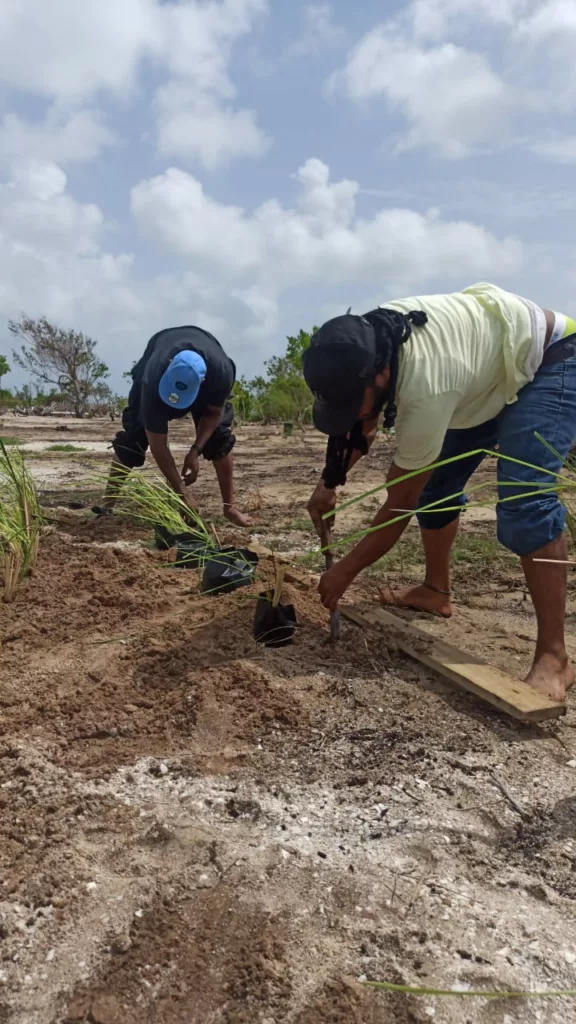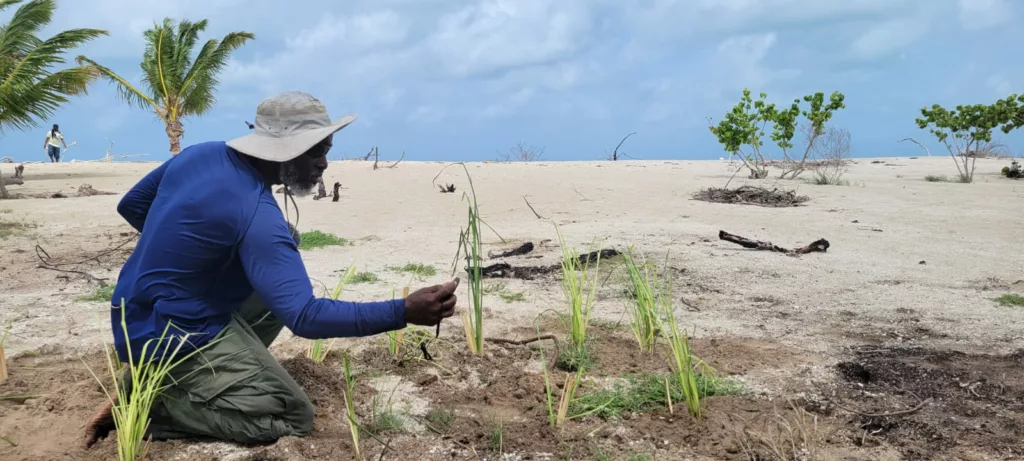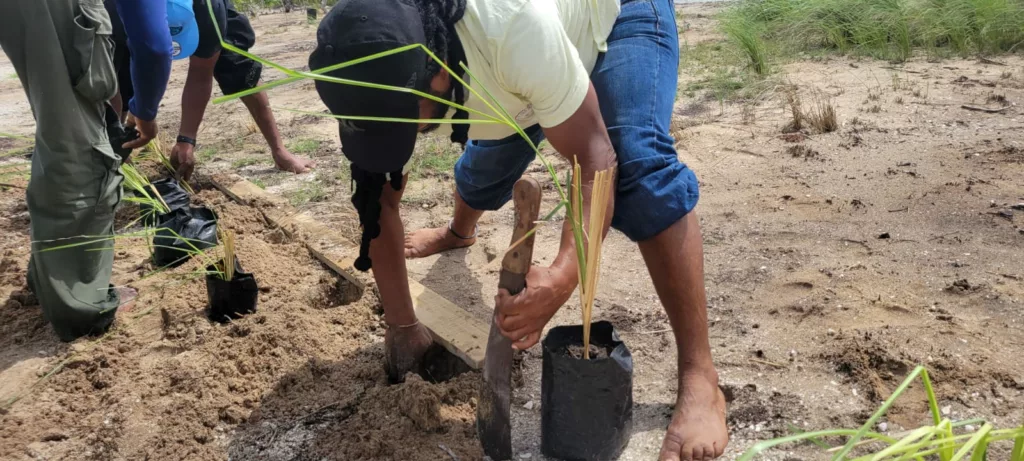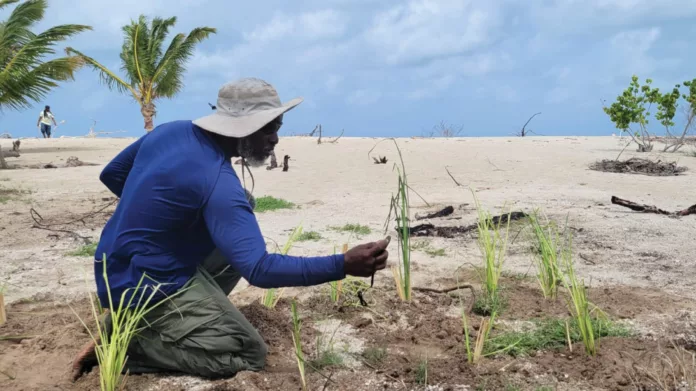A pioneering project is using vetiver grass to stabilise a section of the sandbar in Low Bay which encloses Barbuda’s Codrington Lagoon.
The trial is applying nature-based solutions for soil erosion control and is being implemented by the Inter-American Institute for Cooperation on Agriculture (IICA).
The western boundary of the Barbuda Lagoon – part of the Codrington Lagoon National Park – is comprised of a sandbar that creates Barbuda’s famous 11-mile pink sand beach. The steady process of coastal erosion is increasingly shifting this strategic sandbar inland, with the persistent and widening breach of the sandbar.
This is a visible and direct climate change impact, ie sea level rise, as well as poor land management evidenced by several ill-advised and unapproved developments. Together, these climate hazards and non-climate stressors have negatively altered the coastal dynamics and the sand budget of the island.
This situation has caused continued changes in the water chemistry, physical conditions and habitat quality of the lagoon. Many of its ecosystems have been negatively impacted and disrupted.
John Mussington, Chairman of the Barbuda Council Agriculture and Fisheries Division, highlighted that this increases the exposure, vulnerability and risk to the lives and livelihoods of all Barbudans. Without urgent and strategic interventions, this situation will further compromise the ability to utilise adaptation strategies to cope with the consequences of the climate crisis.





Vetiver grass for soil erosion control is being trialed on a section of the sandbar that is most actively eroding and migrating at an accelerated rate.
Vetiver plantlets were shipped to Barbuda a few weeks ago and, prior to the start of the trial, were allowed to acclimatise to Barbuda’s environmental conditions which are different from Antigua’s.
The grass will be planted over several weeks utilising various agronomical practices, building on lessons learned in using the vetiver green engineering system at the Cooks Landfill in Antigua and from the exchange of experiences from a recent field visit to similar project sites in Dominica.
An important lesson is complementing the vetiver with existing original vegetation, such as mangrove plants, through a re-vegetation exercise reinforced with good coastal management practices. The immediate goal is to demonstrate how re-vegetation can be used as a tool to positively ease further negative impacts of coastal erosion and to transfer good practices and skills to stakeholders who can be empowered to act in their own best interest.


